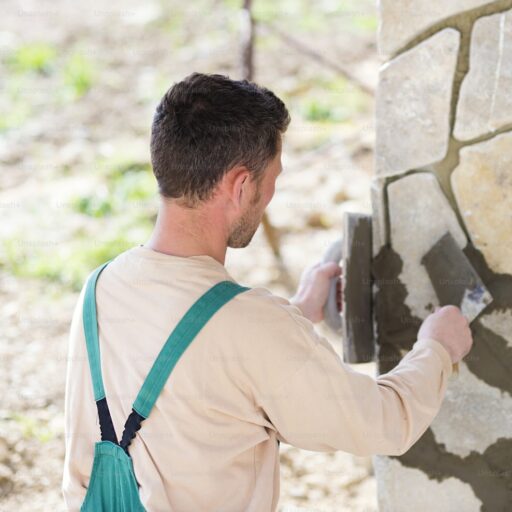Introduction to Flagstone Patterns
Looking to give your patio or pathway a facelift? Flagstone patterns are the secret weapon of savvy homeowners who want a durable, natural look. Natural stone not only elevates curb appeal, it also stands up to the elements. Over the next few thousand words, we’ll dive into six essential flagstone patterns—their unique aesthetics, best uses, and pro installation tips.
Why Flagstone Patterns Matter
Flagstone patterns set the tone of your outdoor space. A crisp geometric pattern feels modern, while irregular layouts exude rustic charm. Choosing the right flagstone pattern ensures your project aligns with both function and style.
Benefits of Natural Materials
Using natural materials like flagstone brings eco-friendly credentials and longevity. Unlike concrete, natural stone weathers gracefully, requiring minimal flagstone care to look its best for decades.
1. Random Ashlar Pattern
Characteristics of the Random Ashlar Pattern
The random ashlar pattern uses multiple rectangular flagstone sizes in a seemingly haphazard arrangement. Yet it maintains straight joints on one or two sides, offering a balanced, structured look with organic variation.
Recommended Stones for Random Ashlar
Hard stones like slate and sandstone work beautifully. Mix sizes—large 18×18-inch squares and smaller 12×18-inch rectangles—for visual interest.
2. Rectangle Ashlar Pattern
Features of Rectangle Ashlar Flagstone Patterns
A cousin of the random ashlar, the rectangle ashlar pattern sticks to just two or three rectangular sizes. Its orderly grid-like effect pairs perfectly with minimalist architecture.
Pairing with Pavers & Flagstone
Opt for coordinating flagstone colors and shapes from trusted suppliers like Southern Stoneworks, then alternate sizes to create subtle rhythm.
3. Running Bond Pattern
Creating Movement with Running Bond
Also known as a “brick pattern,” the running bond pattern staggers flagstone joints by half the stone’s length. This creates linear movement that draws the eye forward, perfect for walkways and garden paths.
Installation Tips
- Lay a dry run to align your joints.
- Use a consistent half‑joint offset for a clean ripple effect.
- Secure stones on a level base of compacted gravel and sand for stability.
4. Herringbone Pattern
Classic Appeal of the Herringbone Flagstone Pattern
The herringbone pattern zigzags stones at 45° angles, forming a V‑shaped weave. Ideal for high-traffic areas, it disperses loads evenly and lends formal elegance to patios.
Best Applications in Patios and Paths
Use uniform-size bricks or paver-shaped flagstone. The pattern shines in courtyards, pool decks, and entry paths, offering both function and flair.

5. Circle or Radial Pattern
Designing a Circular Flagstone Pattern
Want a focal point? A circle flagstone pattern radiates from a center, perfect for seating areas or garden features. Start with a center stone, then fit successive rings—mix shapes for a natural look.
Complementary Stone Patio Ideas
Pair radial designs with central fire pits or fountains for a dramatic backyard centerpiece.
6. Crazy Paving Pattern
Embracing Irregularity in Crazy Paving
Also called mosaic paving, crazy paving uses flagstones in random shapes and sizes fit together like a jigsaw puzzle. Its organic, unstructured look suits woodland gardens and rustic settings.
Maintenance Tips: Flagstone Care
Seal cracks with polymeric sand to keep weeds at bay. Regular sweeping and a mild detergent wash maintain vibrancy without plaque.
Tips for Choosing the Right Flagstone Pattern
Assess Your Space and Purpose
Small patios benefit from structured patterns like rectangle ashlar, while long walkways suit running bond for flow.
Consider Your Home’s Style
Match patterns to architecture: modern homes cry out for herringbone, while cottages embrace crazy paving.
Balance Cost with Complexity
Intricate patterns like radial require more cuts and labor. If budget’s tight, stick to random ashlar or running bond.
How to Source Quality Flagstone
Exploring Natural Stone Slabs
Shop reputable suppliers for consistent thickness and minimal breakage. Southern Stoneworks offers premium slabs in various textures and hues.
Affordable Landscaping Options
Stretch your dollar with budget pavers that mimic natural stone or use reclaimed flagstone for authentic patina.
Conclusion
Choosing the right flagstone pattern transforms your backyard from ordinary to extraordinary. Whether you crave the timeless charm of stretch bond or the rustic allure of crazy paving, there’s a pattern here for every homeowner. Armed with these six designs and pro tips, your next outdoor project will be a showstopper.
7 Unique FAQs
- What is the easiest flagstone pattern to install?
The random ashlar pattern is forgiving—fit varied rectangles without strict alignment. - How thick should flagstone pavers be?
Aim for 1¼ to 2 inches for patios; 2–3 inches if subjected to heavy loads. - Can I lay flagstone directly on soil?
No—prepare a base layer of crushed gravel and sand, compacted for stability. - How often should I seal my flagstone?
Once a year in high-traffic areas; every 2 years for low-use paths. - What’s the best way to cut flagstone for radial patterns?
Use a wet saw with a diamond blade and wear safety gear—measure and mark precisely. - Are flagstone patterns slippery when wet?
Textured and rough finishes offer good traction; polished surfaces can be slippery. - Where can I find coordinating stone veneer and pavers?
Visit Southern Stoneworks LLC for flagstone, pavers, veneers, and more.

